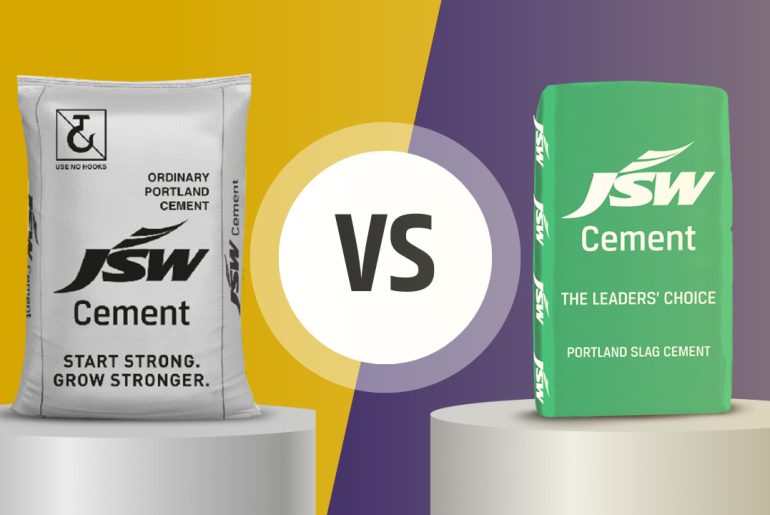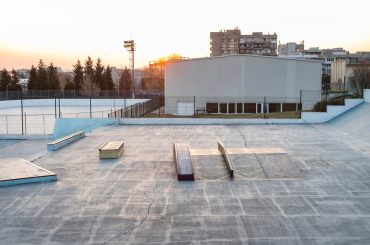The type of cement determines a building’s structural integrity, and durability is crucial for ensuring the structural integrity and durability of the building. OPC (Ordinary Portland Cement) and PPC (Portland Pozzolana Cement) use cement varieties. While both have merits, understanding the critical differences between OPC vs PPC can help contractors and engineers make informed decisions. This article will delve into the characteristics, benefits, and applications of OPC vs PPC, shedding light on their strengths.
OPC: The Foundation of Modern Construction
Discussing OPC vs PPC Let’s start with OPC. Ordinary Portland Cement (OPC) is the most widely used cement type worldwide and for a good reason. Hydraulic cement undergoes a chemical reaction with water to form a solid, robust structure. Here are some key features and benefits of OPC.
Strength and Durability
OPC offers excellent early strength, making it ideal for projects that require quick setting times. It possesses high compressive strength, ensuring the longevity and stability of the structure. Additionally, OPC is resistant to harsh environmental conditions, such as freeze-thaw cycles, providing durability in various climates.
Versatility
OPC can operate in various construction applications, including foundations, walls, columns, beams, and precast elements. Its versatility makes it suitable for residential and commercial projects, offering reliable performance across diverse construction scenarios.
Rapid Setting
OPC has a shorter setting time than PPC, allowing for faster construction progress. This advantage is particularly beneficial in time-sensitive projects or situations where early strength development is essential.
Initial Cost
OPC is more cost-effective than PPC, which makes it an attractive option for budget-conscious projects. The widespread availability of OPC and its established production processes contribute to its competitive pricing.
Choosing the Right Cement for Your Project
Following the discussion about OPC vs PPC, let’s discuss PPC. Portland Pozzolana Cement (PPC) is gaining popularity in construction due to its eco-friendly properties and enhanced workability. Let’s explore the unique aspects of PPC.
Pozzolanic Material
PPC contains pozzolanic materials like fly ash, volcanic ash, and silica fume, which adds during cement manufacturing. These materials act as supplementary cementitious materials, enhancing the cement’s properties and reducing its carbon footprint.
Sustainability
By utilizing waste materials like fly ash, PPC reduces the demand for non-renewable resources and helps curb environmental pollution. Incorporating pozzolanic materials also leads to lower heat of hydration, reducing the risk of thermal cracking.
Workability
PPC exhibits better workability than OPC, making it easier to handle and mix. It provides improved cohesion, reduced water demand, and enhanced resistance to segregation, resulting in smoother concrete surfaces. These properties make PPC well-suited for intricate architectural designs and decorative elements.
Reduced Risk of Alkali-Silica Reaction
PPC’s pozzolanic content helps mitigate the risk of alkali-silica reaction, which can cause expansion and cracks in concrete structures over time. This advantage enhances the long-term durability of the construction.
Choosing the Right Cement for Your Project

The selection between OPC vs PPC depends on several factors, including project requirements, environmental considerations, and budget constraints. Here are some guidelines to assist in making an informed decision.
Strength and Setting Time
If early strength development and rapid setting are crucial for your project, OPC might be the better choice. However, PPC can be a suitable option if you can afford a slightly longer setting time and prioritize long-term durability.
Sustainability and Environmental Impact
PPC is a sustainable choice for environmentally-conscious projects aiming to reduce carbon emissions and utilize waste materials. It contributes to green building practices and supports sustainability goals.
Cost and Availability
OPC generally has a lower initial cost compared to PPC. However, regional availability and market dynamics can influence cement prices, so it’s essential to consider the local context before finalizing the selection.
Conclusion
Final thoughts on OPC vs PPC. I am choosing the right cement type, whether OPC vs PPC, is critical in construction projects. OPC provides excellent early strength, durability, and versatility, making it a reliable choice for various applications. On the other hand, PPC offers sustainability benefits, improved workability, and reduced risk of alkali-silica reaction.
By understanding the characteristics and benefits of each cement type, contractors and engineers can make informed decisions based on project requirements, environmental considerations, and budget constraints. Ultimately, the right choice will contribute to the successful completion of construction projects while ensuring the built environment’s long-term structural integrity and sustainability.






